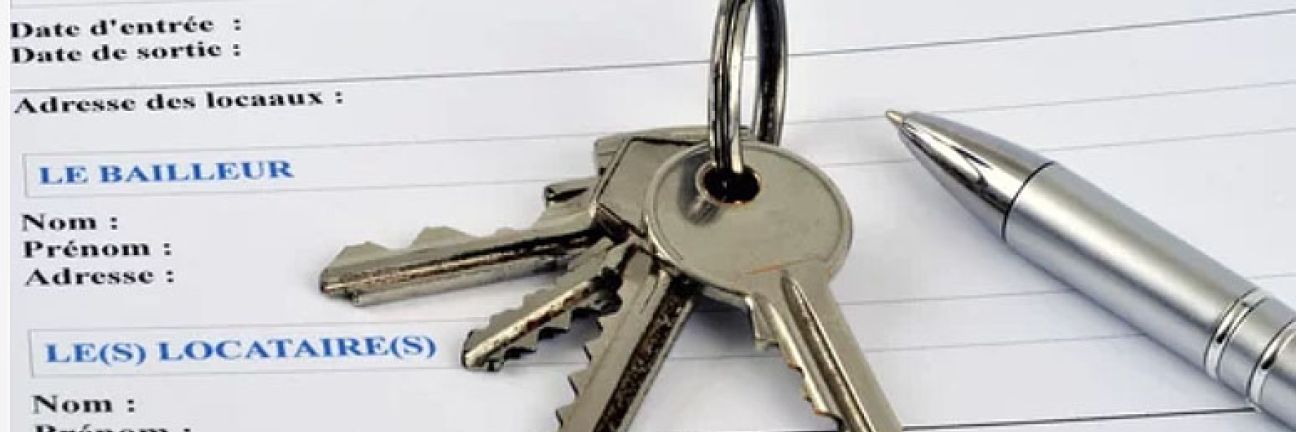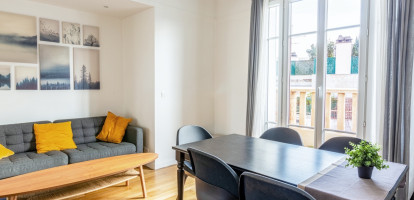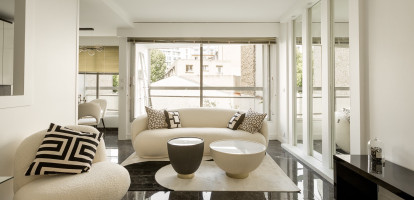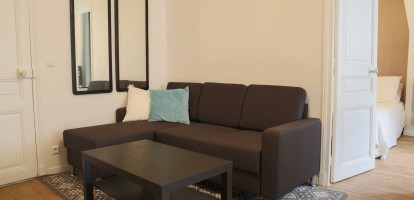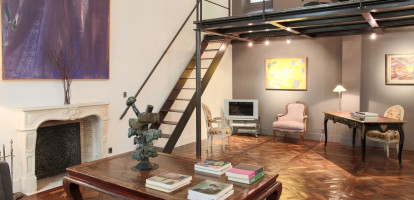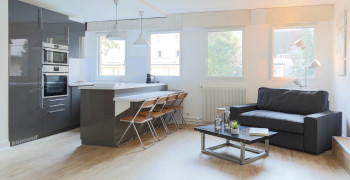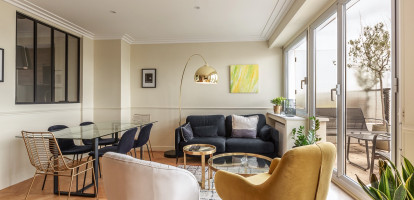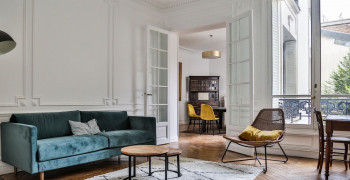Entry and exit inventories of furnished rental: what you need to know
It is the day when leaving the rented apartment that a tenant realizes the importance of his security deposit. Therefore, the tenant and owner (or their representative) need to be thorough when making the inventory when entering the apartment.
In the case of a furnished rental, it is then that the tenant can test the proper functioning of the household appliance, as well as the television, the internet connexion -when the installation is on, and the various remote controls.
Even tired, even in a hurry to discover their new neighborhood and have a drink at the local brewery to celebrate, the tenant must take their time for this essential step: the inventory.
Definition and importance of the inventory of fixtures in furnished rentals
The inventory of the premises transcribes the apartment's condition from floor to ceiling, including equipment, description, and the state of maintenance and repair of each room. Neither the owner nor the tenant has any interest in neglecting it because this document sets out the following obligations:
- The owner-lessor must deliver the apartment (empty or furnished) in good condition.
- The tenant is required to return the property in good condition.
Carrying out an effective check-in inventory of fixtures for your furnished apartment for rent
For the owner, the inventory of the premises established upon arrival is future proof of whether the tenant has maintained the property correctly or not when he leaves. Have they carried out the repairs required during the apartment's rental? With evidence, the owner will be entitled to deduct the repair costs from the security deposit paid by the tenant at the signing of the lease. In addition, carrying out the inventory during the day makes it easier to identify anomalies, scratches, and stains than artificial light.
Foremost, we advise the owners to keep the invoices for the equipment available to the tenant. In the event of a dispute, the invoices establish the age of the device and its price. Likewise, vigilant owners prepare a folder in which to find device manuals and warranty dates. This precaution encourages the tenant to learn how to use the machine. In addition, if there is a breakdown (which is sometimes easily adjustable), it avoids discussions around the responsibility for the repair and the cost of calling a service provider.
After finalizing your furnished apartment rental the tenant should be aware that the inventory established upon arrival can be modified within ten days afterward about any element concerning the accommodation.
Also, the tenant can request a modification in the 1st month of the heating period when starting the heating elements. If the boiler or radiators malfunction, the tenant must inform the landlord responsible for correcting it. Each party can then note in the inventory upon arrival the date of the incident and the restoration.
Finally, each party should take note of the electric meter reading both when entering and leaving the property, to calculate the last electricity bill. The same is true with the gas meter.
Tenant's obligations for the inventory of fixtures: what you need to know
The maintenance and minor rental repairs are the responsibility of the tenant for the duration of the rental. All parts of the home (interior or exterior) and its equipment items are concerned
The tenant is required to do the work and rental repairs during the lease. Damages caused by negligence (lack of maintenance or lack of care) are at their charge.
The most common repairs and maintenance that the tenant takes care of are:
- Plumbing maintenance (replacement of faucet seals, flushing)
- Descaling the showerhead
- Unclogging of pipes.
- Maintenance of the electrical installation & replacement of bulbs
- Annual Heating system maintenance
- Repairs of household machines, except in case of obsolescence.
- Holes or stains on the walls,
- Burnt carpet, damaged parquet floor.
These rental repairs payable by the tenant are listed and detailed exhaustively in a decree published on August 26, 1987.
Here are some common examples of rental repairs that are the tenant's responsibility
1. Checking the apartment's interior during the move-in inspection
The tenant is responsible for checking and removing mold from the shower tile joints.
As for the kitchen, the tiles must be clean, the worktop and the hobs degreased, the air vents dusted.
Blog: a perfect kitchen in a furnished apartment for long term rental in Paris
It is essential to scrutinize every corner. First, clean the stains or traces on the walls and the floor. A magic eraser and claystone are allies for this cleansing. Next, properly plug the holes drilled for fixing shelves, traces of glue from fixing furniture to the wall, and posters' pinholes. Otherwise, it will be considered as damages by the lessor. Finally, on the day of the inventory, check the windows and glass condition. If these are broken or cracked, please replace them.
Advice to owners: Before handing over the apartment to the tenant, make sure to grease the hinges, handles, and locks of doors and windows to avoid future problems.
2. Checking the electrical system during the inspection
The electrical system and the light bulbs have to work properly. Also, ensure that the electrical outlets and interrupters are in good working.
3. Check the property exterior during the inspection
For homes with a balcony, terrace, or garden, it is essential to make these surfaces clean, free of debris and dead plants ... These outdoors must be in the same condition as described in the entry inventory.
Repair work to be carried out by the owner: Guide to the inventory of fixtures
The owner's obligations for a long-term furnished rental are such as carrying out heavy work outside of minor repairs and routine maintenance of the tenant. The lessor must take care of severe repairs unless attributable to a tenant mistake. If he does not do so, the tenant can seek legal help for disturbance in his rental.
Here are some examples of the lessor's responsibilities:
- Improvement work for shared and private areas (lift, digital code, roof maintenance, etc.)
- Work necessary to maintain the regular maintenance of the accommodation (insulation, defective shutters, etc.)
So, how to prepare for your departure?
Tenants: How to perfectly prepare your apartment rental for the move-out inspection
The exit inventory is an important step that the tenant must prepare. Make a logical plan, and be sure that you check every room of the apartment. Have the inventory of arrival ready to compare the apartment's condition as you received it and as you return it.
Apartments for rent with two bedrooms in Paris
Apartments for rent with three bedrooms in Paris
Apartments for rent with four bedrooms and more in Paris
Good to know: Sometimes tenants who loved their life in the apartment and pampered it for them to feel good there will deliver it in a better condition than before!
Understand different terms of "state of use" in an inventory of fixtures
In the real estate world, several terms define the condition of use. Here are some examples:
- Obsolete: State of wear or destruction due to everyday use of materials and equipment in the home.
- New / Perfect condition: The equipment has been used very little or never since the delivery of the property or its refurbishment. There are very few signs of use, and it is not damaged.
- Good condition: No visible damage, the equipment is clean and works properly.
- Reasonably good condition / Average condition: Some signs of wear are visible but are not related to deterioration. Materials and equipment are clean and are functioning normally.
- Degraded: The equipment is damaged and deteriorated.
- To be changed / Out of service: The equipment is unusable, very severely damaged, or broken.
We advise both landlord and tenant not to stick to general terms such as the above. Instead, it is necessary to use precise descriptions such as "parquet in good condition except for a split slat" or "door and window with paint chips."
Good to know: You should know that the inventory of exit of the general condition of the apartment will also take into account the obsolescence of the furniture and appliances. In the event of significant degradation and necessary repair, an obsolescence rate is applied.
Here is an example of an obsolescence grid:
|
Equipment
|
LifeTime
|
Franchise
|
% reduction per year after the franchise
|
Residual value payable by the tenant beyond the useful life (in%)
|
|
Plumbing - Pipelines
|
15 years
|
5 years
|
8%
|
20%
|
|
Sanitary devices
|
20 years
|
5 years
|
5%
|
25%
|
|
Heating: network and radiators
|
25 years
|
5 years
|
4%
|
20%
|
|
Gas appliance for heating and / or E.C.S production
|
15 years
|
5 years
|
8%
|
20%
|
|
Electric heater and / or DHW production (and regulator)
|
10 years
|
2 years
|
10%
|
20%
|
|
Electrical network (including table)
|
20 years
|
5 years
|
5%
|
25%
|
|
Hardware store
|
10 years
|
2 years
|
10%
|
20%
|
|
Faucets
|
10 years
|
2 years
|
10%
|
20%
|
|
Household appliances
|
8 years
|
2 years
|
15%
|
10%
|
|
Interior and exterior joinery
|
20 years
|
5 years
|
5%
|
25%
|
|
Furniture under sinks
|
10 years
|
2 years
|
10%
|
20%
|
|
Parquet - Tiles - Earthenware
|
20 years
|
5 years
|
5%
|
25%
|
|
Slabs or plastic coverings wet rooms
|
10 years
|
2 years
|
10%
|
20%
|
|
Slabs or plastic coverings other parts
|
15 years
|
5 years
|
8%
|
20%
|
|
Carpet and Needle Punch
|
7 years
|
1 year
|
15%
|
10%
|
|
Painting - Wallpapers
|
7 years
|
1 year
|
15%
|
10%
|
|
Blinds
|
5 years
|
1 year
|
20%
|
20%
|
|
Shutters and roller shutters
|
10 years
|
2 years
|
10%
|
20%
|
Handling disputes during the inventory of fixtures: Tips and advice
When the owner and the tenant cannot agree on the conclusion of the exit inventory, they can call on a bailiff to settle the dispute. The bailiff will base their observations on the entry inventory and indicate who has to make the repairs or replacements, if necessary. When the request comes from the tenant, the lessor cannot refuse. The same applies if this request comes from the owner.
Who pays the bailiff? The lessor and the tenant share the cost by half.
Return of the security deposit after the check-out inspection in France: deadlines and procedures
If there is no damage stated in the exit inventory, the owner must return the security deposit within one month from when the tenant returned the apartment's set of keys.
If damages are detected, the rest of the tenant's security deposit must be returned within two months from when the tenant returned the apartment's set of keys.
Nota bene: if the tenants' debts exceed the security deposit amount, and in the absence of an agreement between the two parties, the landlord can apply it to the district court to obtain additional compensation.
In conclusion, for a good relationship between owner and tenant, whether during the rental period or in the exit inventory, each party will benefit from being precise and vigilant when entering the property!
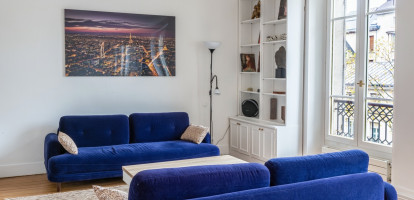


 Français
Français
